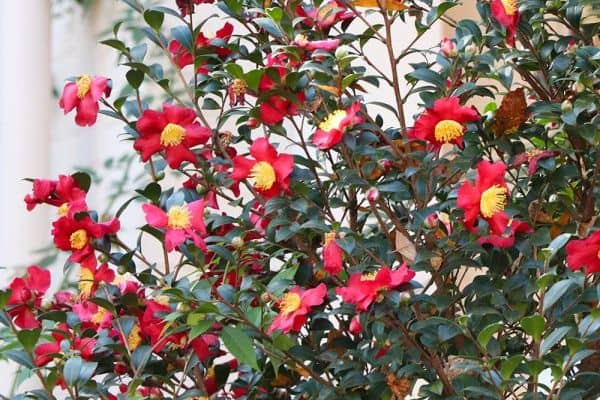Yuletide Camellia is a beautiful flowering plant that blooms in Pinkish-red colored flowers during late fall and winter. They can grow up to 8 to 10 feet tall and 6 to 8 feet wide when they are well established.
So today in this post we will learn how to grow and care for the Yuletide Camellia flowering plant in your garden:
Yuletide Camellia Growth and Care Guide
Yuletide Camellia is a low-maintenance plant that won’t need much care after they are well well-established and can thrive on its own most of the time. Here are some of the ways you can care for your Yuletide Camellia to grow well and bloom the flowers well:
1. Light
As for light, Yuletide Camellia needs part sun from four to six hours of sun a day which will help them to grow effectively also the hours of sun per day include a few afternoon rays. They can even handle areas in part shade or in a bit more sun just remember to provide enough moisture to them during the hottest part of the day.
2. Soil
As for soil, Yuletide Camellia needs well-drained and moderately moist soil fro them to them to grow effectively. They can even tolerate some sand or clay but do not grow well in alkaline soil.
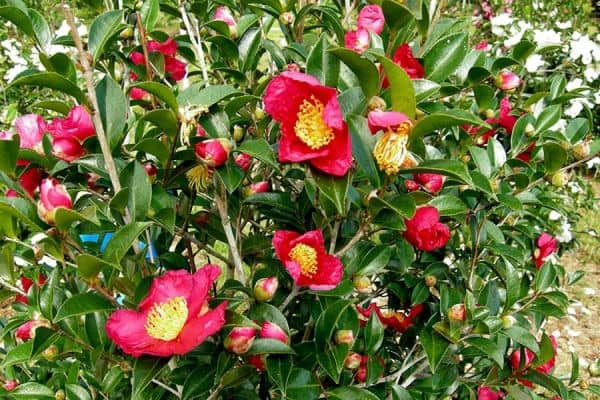
3. Water
As for water, Yuletide Camellia is needed when the top three inches of soil are dry and they must be watered regularly so that they can grow properly. You can also apply mulch around the soil of the plant steam so that they can get enough moisture. Once they are established well they can be drought-tolerant more.
4. Temperature and Humidity
As for temperature and humidity, Yuletide Camellia needs 18 degrees Celsius to 25 degrees Celsius for them to grow well. They can tolerate up to -5 degrees Celsius – 41 degrees Celsius but during the winter or cold season, they can fungal problems which include cool, wet springs, Hot season, and humid days.
5. Fertilizer
As for fertilizer, Yuletide Camellia needs slow-release nitrogenous fertilizer during the summer season once as that will help the plant get stem and leaf growth period to make leaves greener and more luxuriant. You can also apply phosphate-potassium fertilizer 1-2 times during the time of bud appearance to help the bloom well. Remember to check the instructions on the package while using fertilizer as it’s always best to check.
6. Pruning
As for pruning, Yuletide Camellia may have dead or dying twigs when they are overgrown and can be removed with the pruning method. You can also reshape or shear your Yuletide Camellia shrub after they bloom their flowers as they can help in next year’s flowers. If you want you can prune 1/3 to 1/2 of the shrub but if you prune 1/3 to 1/2 of the shrub the flowers may not bloom for a couple of years.
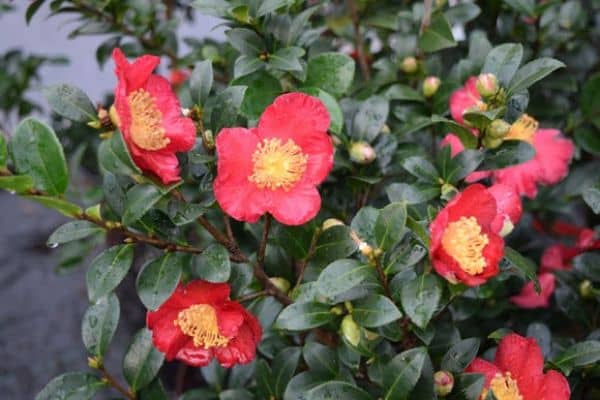
Common Pests and Diseases with Yuletide Camellia
Yuletide Camellia plants are likely to be infected with fungal diseases that can cause leaves to have spots and galls, cankers, petal blight, and root rot, among other things. In most cases, the best action you can do to remove badly infected leaves, flowers, or twigs is to remove all the fallen leaves and flowers, you should also avoid getting the leaves wet while watering the plant, and you can also improve drainage for the plant if needed.
Most of the time Yuletide Camellia can also be infected by scale insects, which pierce the leaves of the plants and suck the sap. A bad infestation can also cause the Yuletide Camellia leaves to turn yellow or to be covered with sticky sap and black mold. The scale insects gather underneath the leaves of the plant and often look cottony. They can be scraped off the leaves or you can simply spray the leaves with horticultural oil and they will not harm the plant.
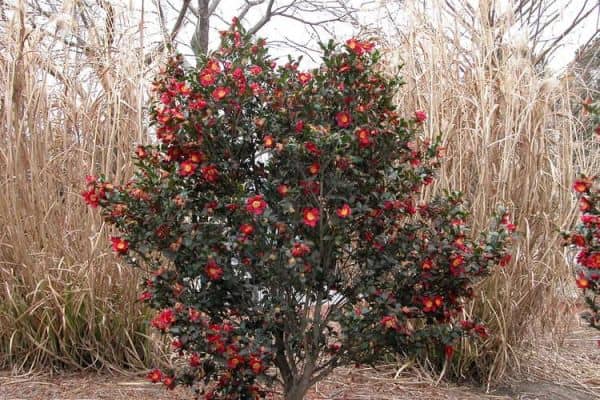
Common Problems with Yuletide Camellia
Common Pests and Diseases like fungal infections and scale are not only problems as your Yuletide Camellia can have problems like yellowing and browning leaves. If the yellow leaves have green veins that indicates your shrub has chlorosis, which means the leaves of Yuletide Camellia plants are not producing enough chlorophyll. Here are also some of the reasons and cures for the Common Problems with Yuletide Camellia:
Leaves Turning Yellow
Yellowing leaves also known as chlorosis, can cause in Yuletide Camellia if they iron but also some yellowing and leaf drop of older leaves is normal in them. If your Yuletide Camellia shrub is planted in alkaline soil which also has too much lime, they will have difficulty consuming the iron it needs from the soil. You can test your soil at the local extension office to determine if the soil in your garden or pot is alkaline or not. You can also use a spray with an iron compound on the leaves to green them up but remember the results are temporary and yellow leaves can come back.
Leaves Turning Brown
If your Yuletide Camellia plant leaves are scorched or have bronzed areas, your camellia may have suffered from sunscald. Sunscald occurs on a side of the plant that has been exposed to full sun for a long period of time. To solve this problem in your plant you can move the shrub to a shadier location or provide more shade where your Yuletide Camellia plant is located.
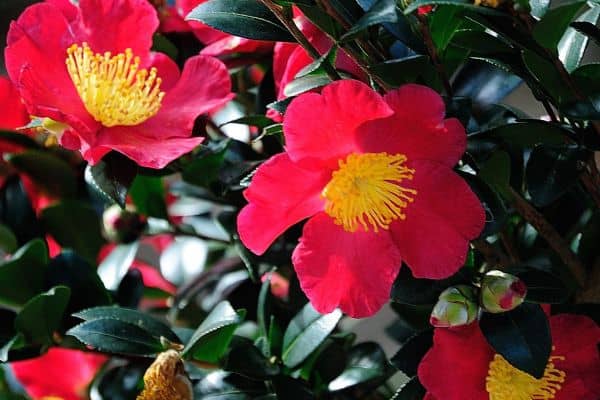
Some of the Extra information on Yuletide Camellia
- Common Name: Yuletide Camellia
- Botanical Name: Camellia sasanqua ‘Yuletide’
- Family: Theaceae
- Plant Type: Shrub
- Mature Size: 8 to 10 ft. tall, 6 to 8 ft. wide
- Sun Exposure: Part sun
- Soil Type: Loamy, sandy, clay, well-drained
- Soil pH: Neutral to acidic
- Bloom Time: Late fall, winter
- Flower Color: Pinkish-red
- Hardiness Zones: 7-10 (USDA)
- Native Area: Asia
FAQs
Q. Can Yuletide Camellia take full sun?
Yes, Yuletide Camellia can take a full sun from four to six hours of sun a day, including a few afternoon rays.
Q. What is special about camellia?
The special thing about camellia is they can bloom for longer seasons and they can even bloom during the fall and winter seasons too.
Q. What is the meaning of Yuletide Camellia?
The meaning of Yuletide Camellia is not available but it was named because it’s supposed to bloom at Christmas.
Also Read: Anise Hyssop Plant Growth And Care Tips to Attract More Butterflies and Honeybees!
